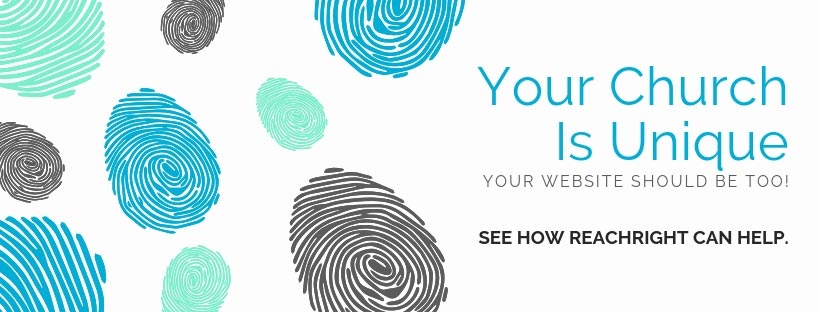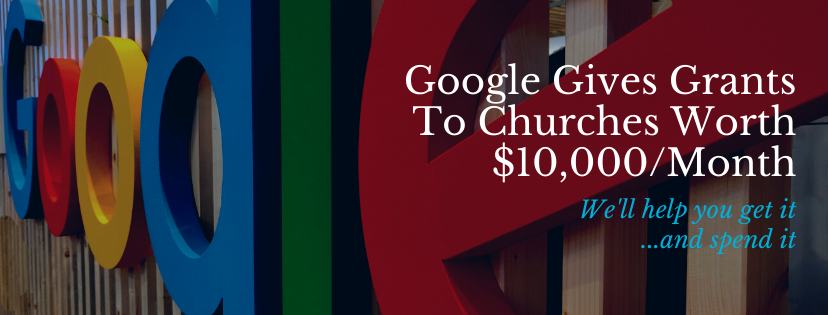Estimated reading time: 10 minutes
Often times, churches don’t realize how many amazing resources are available for nonprofits, such as G Suite for churches and other nonprofits.
G Suite goes beyond just the basic Google apps you might already use for free, such as Gmail and Google Docs. The best part is as a church, you can get free and low-cost pricing on the same suite of tools major businesses use.
Everything you need to run your church more smoothly, while increasing growth, could be available to you for free. All you have to do is learn how it all works.
Table of contents
- G Suite For Churches Basics
- Apps Included In G Suite
- G Suite For Nonprofits
- G Suite Business For Nonprofits
- G Suite Enterprise For Nonprofits
- A Look At The Cost Savings
- Increase Collaboration Among Staff And Volunteers
- Surprising Benefits And Uses
- Free Upgrades Included
- Determining G Suite For Churches Eligibility
- Using Google Grants
- Other Free Google Tools For Your Church

G Suite For Churches Basics
Your church is technically a business, so you should have the same level of tools that businesses use to grow. In this case, G Suite has most everything you need.
G Suite includes multiple tools under one name. Unlike Google’s free tools for personal use, G Suite is made for businesses. This means using your church’s domain name for more professional email addresses versus just using “gmail.com.” You also get more storage for every user beyond the standard 15 GB that’s free for individuals.
Like other Google tools, G Suite is completely cloud-based, meaning you don’t have to worry about installing and maintaining expensive software on every device. Instead, your entire church staff and your volunteers can access the tools from any browser and device.
It’s important to note that G Suite is part of the Google for Nonprofits program. We’ll get more into that later in this post, but all you need to know for now is the program helps nonprofits, including churches, get a variety of productivity, collaboration and marketing tools and assistance for free. Some things still require a low monthly fee, but they’re optional parts of the program.
Apps Included In G Suite
Think of G Suite as similar to Microsoft Office 365. However, if you apply for G Suite for churches, it’s completely free compared to Microsoft’s monthly plans.
The main apps you’ll have access to in G Suite include:
- Gmail – Uses your domain name versus gmail
- Docs – Word processing program
- Sheets – Spreadsheet software
- Slides – Presentation tool
- Calendar – Manage multiple calendars in one tool
- Drive – Cloud storage for files
- Google Chat – Instant messaging tool
- Google Meet – Call and video conferencing tool
While more apps are available, these are all included in the free plan designed specifically for nonprofits. While we’ll break down each plan below, you can see a breakdown of features along with all apps available directly at Google’s G Suite for Nonprofits plan listing.
While you can technically piece all of this together yourself for free, you’ll still miss out on some important benefits. Mainly, it’s easier to manage the entire suite when it’s all under one account.
Plus, if you’re contacting members, new visitors and even messaging online followers, it looks far more professional if your email address has your church’s name or site name in it. People are more likely to open and trust an email from pastorsteve@firstchristianchurch.com versus pastorsteve185@gmail.com.
If you’ve ever tried to set up a Gmail account, you know it’s hard getting the exact email address you want. Plus, everyone on your staff can have a Gmail account with your church’s domain name, ensuring everyone looks more professional when contacting people via email.
If you’re used to using Microsoft Office, don’t worry. You can easily import your files to G Suite’s similar tools to continue working. You can even export in Microsoft Office formats if you need to send the files to someone who’s not using G Suite.

G Suite For Nonprofits
The G Suite for churches plan is called G Suite for Nonprofits. It’s the basic and 100% free plan. So, if your church is on a tight budget, this is the perfect plan for you. For small to medium churches, this is really all you need.
It includes all the apps mentioned previously. This means you can easily create documents, reports, charts, presentations and more for free. Plus, you can meet with up to 100 people at a time via Google Meet.
Every member of your team has 30 GB of free cloud storage. The great news is every G Suite plan made for nonprofits include unlimited users, so you don’t have to worry about any per user fees. If you do need more storage space, you can upgrade your plan or individual users can purchase more storage.
You’re able to upgrade at any time, so it’s best to start with this plan. After all, it’s free and you have absolutely nothing to lose. Odds are, you’ll probably end up sticking with it as it includes most of what you need.
G Suite Business For Nonprofits
G Suite Business for Nonprofits is the first premium plan designed for nonprofits. It costs $4/month/user. So, if you have a lot of users, this can get expensive quickly. However, there are a few benefits that may make you consider it.
First, every user gets 1 TB of storage included. You also have the ability to do a full cloud search across all of your G Suite apps at once. This means you can search Gmail, Docs, Sheets and more through a single search versus searching each tool individually.
This plan also includes Vault, which is an archiving tool. Export all of a user’s data when they leave your church. You can then search it and use it. Or, just use it as a way to archive files you’re not actively using.
If you want to boost security, this plan adds a few more security features, such as more access control. You also get more advanced reporting features.
G Suite Enterprise For Nonprofits
If you need even more security features along with data recovery options, then G Suite Enterprise for Nonprofits might be best for your church. In most cases, only large churches will get the most benefit from this plan, which costs $8/month/user. For smaller churches, the cost can quickly eat away at your budget.
There are a few notable features that do help set this plan apart, though. First, you can video conference with up to 250 people at a time. You also have the option to record live meetings, which can be great if you’re holding a roundtable-style meeting that others might want to watch later.
There’s also the option to live stream using Google Meet. However, remember that you can also live stream for free using Facebook Live. There are also a variety of other options for live streaming your services that have a flat rate that may be cheaper than this plan.
Overall, it’s not worth it to get this plan just for the live streaming option. If you need the other features, then the additional $8/month/user might well be worth it.

A Look At The Cost Savings
When using G Suite for churches, you get a substantial discount over the standard G Suite, now known as Google Workspaces when used for for-profit businesses. The basic plan starts at $6/month/user.
You also have to consider how much you’re paying for the tools you’re currently using. If you’re paying for a productivity suite or custom email services, you could easily eliminate all those costs just by switching to the G Suite for Nonprofits program.
If you’re using software that has to be installed on every device, you’re likely subject to per device fees too. This means you’re having to pay for every device and upgrade. Plus, you’re left to install and manage everything yourself.
With G Suite, everything is cloud-based, though you can download any files you create. You don’t have to worry about compatibility issues as G Suite apps are compatible with most browsers and mobile devices.
Depending on what tools your church is currently using, you could save hundreds or even thousands a year.
Increase Collaboration Among Staff And Volunteers
Thanks to everything being cloud-based, G Suite for churches makes it easier to collaborate. Even if your church staff is working remotely, you can still collaborate on files, create fun presentations for your members together, hold video meetings to stay connected and much more.
Volunteers can share files with each other to better manage projects. You can also create shared files to help with volunteer and staff onboarding.
By making it easier for everyone to work together, you become a closer team. And this helps your church grow stronger.
Surprising Benefits And Uses
Free Upgrades Included
Upgrades are never cheap. But, they’re necessary. You’ve likely went through numerous software and hardware upgrades for your church over the years. If you don’t upgrade, you could make your church vulnerable to security threats. Plus, you risk compatibility issues.
With G Suite for churches, upgrades are included for free. No matter which plan you choose, everything is upgraded and updated automatically as new features are released. If something changes in Google Docs, you don’t have to do anything but enjoy the new changes. It’s that simple.
Determining G Suite For Churches Eligibility
You’re probably thinking this all sounds too good to be true, but it’s not. However, you do have to ensure you’re eligible for the Google for Nonprofits program first. G Suite is just one of the many benefits and resources available through this program.
In most cases, your church should be eligible. You have to apply for the program and allow Google to verify that you are eligible before gaining access to the various resources.
To make it easier, we’ve broken down the main requirements. This can help prepare you for the process. The process doesn’t take long and isn’t difficult. However, once you’ve successfully applied, you’ll be glad you did.
There are no costs to apply. If for any reason you’re not eligible right now, you can apply again once your situation has changed.

Using Google Grants
Part of the Google for Nonprofits program is Google Ad Grants. As you might have noticed, we mentioned “marketing” earlier in this post. While G Suite can definitely help you prepare and track your marketing materials, it doesn’t necessarily pay for the marketing.
When you apply for the program and get access to G Suite for churches, you can also get Google Ad Grants. You’ll get $10,000 in Google ad credits every month for free.
While there are some rules and restrictions, the program is easy to learn. Plus, you can hire a professional like Reach Right Studios to help you manage your account to get the most benefits.
With the monthly grant, you can grow your church, boost traffic to your church website, help recruit volunteers and so much more. It doesn’t matter how big or small your church is either. Only have 50 members? You can still apply and get $10,000 a month along with all the other Google for Nonprofits benefits.
Other Free Google Tools For Your Church
As mentioned above, G Suite for churches is just one of the resources available in the Google for Nonprofits program. You apply once and get access to everything.
Not only do you get G Suite and Google ads for free, but you also get the YouTube Nonprofit Program and Google Earth and Maps.
With the YouTube Nonprofit Program, you can easily add fundraising features directly into your videos. Plus, you get access to special training and tutorials to help you make the most of your videos.
With Google Earth and Maps, you’re able to create visuals to showcase where your church is making an impact on the world. This is a great way to increase donations and volunteers.
If everything seems a bit overwhelming and you’re not sure how to make the most of all these free resources, take advantage of Google’s free tutorials on everything from increasing volunteers to monitoring your website’s traffic.
All you have to do is apply for Google for Nonprofits today. Then, simply activate one or more of the free resources. G Suite for churches is a great place to start and then consider using a Google Ad Grant.
Need help managing your Google Grant? Let Reach Right Studios help. Our team of Google certified AdWords specialists will ensure you get the most benefit from your grant.





Comments 1
I am on a Church Archive Team. We are trying to digitize a 190 years of information. There is an assortment of information including church membership roles, church business meeting minutes, photographs etc… We are looking for a digital storage capability to safely store the significant parts of our history. Is there something specifically you can recommend fr our team?